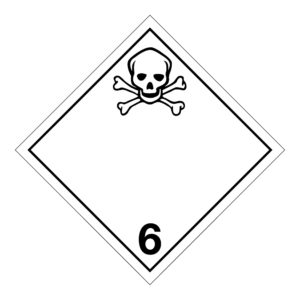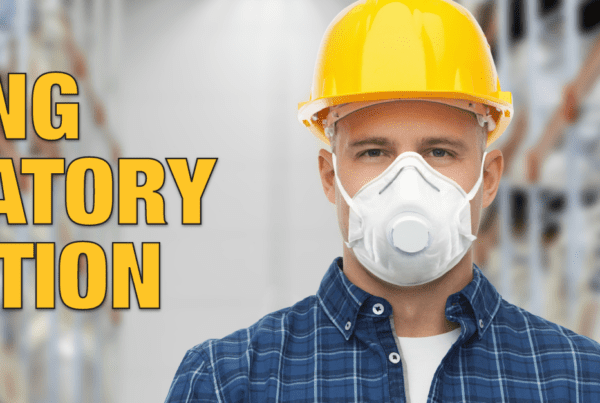Top 4 Questions From the Regulatory Helpdesk
Welcome back to the Regulatory Helpdesk where we answer your dangerous goods & hazmat questions. Here are some highlights from our helpdesk last week. Check back weekly, the helpdesk rarely hears the same question twice.
#4. Why is My Product X when it should be Y? (USA)
- Q. Why is my product listed as a Flammable Liquid Category 4, when the product is combustible?
- A. Under OSHA Hazcom 2012, a product that has a flashpoint >140°F and <199.4°F is considered a Flammable Liquid Category 4.This is illustrated in the table below:
Table B.6.1: Criteria for flammable liquids
Table B.6.1: Criteria for flammable liquids Category Criteria 1 Flash point < 23°C (73.4°F) and initial boiling point ≤ 35°C (95°F) 2 Flash point < 23°C (73.4°F) and initial boiling point > 35°C (95°F) 3 Flash point ≥ 23°C (73.4°F) and ≤ 60°C (140°F) 4 Flash point > 60°C (140°F) and ≤ 93°C (199.4°F) Once you have the classification, then you can apply the label phrases. The Flammable Liquid Category 4 hazard statement is Combustible Liquid. This is outlined in the table below.
C.4.19 Flammable Liquids (Continued)
(Classified in Accordance with Appendix B.6)Hazard Category Signal Word Hazard Statement 4 Warning Combustible Liquid
#3. Does my Class 6 placard need to show Class 6.1? (International)
- Q. I have a customer who is saying that it is the regulation to have the 6.1 on the bottom of the placard … and not just the 6 in order to ship overseas. Is this a regulation that I just don’t know about?
- A. Let’s start with the easy one – Air. First of all, there are no placards used in the IATA. This is mainly because you cannot placard the outside of an airplane. If they are talking about a label, then that is different. Per Section 7.3.14 a Class 6 Toxic Substance LABEL does not have a 6.1 in the bottom of the label. Here is the exact information from IATA. There are some state and operator variations, but none for the US or Canada. In Section 7.2.2.4 you “may include information in the lower half such as the UN number, or words describing the hazard class (e.g. “flammable”) provided that the text does not obscure or detract from the other required label elements. This text should be in English, unless otherwise required by the State of origin …”
7.3.14 Class 6— Toxic Substances (Division 6.1)
Ocean has both placards and labels. Labels are found in Chapter 5.2 and placards are in 5.3. In IMDG placards are considered as “enlarged labels”. Chapter 5.2.2.2.2 is where you find the specifications for the labels. For the Class 6.1 it is the same picture as shown above with the following text: Toxic substances. Symbol (skull and crossbones) – black and Background – white. Figure “6” in the bottom corner. The same notation regarding “text such as the UN number, or words describing the hazard” is found in 5.2.2.2.1.3. For placards in 5.3.1.2.1 it says “the placard shall display the number of the class or division of the dangerous goods in question in the manner prescribed in 5.2.2.2…”
I see nothing in either regulation that requires a “6.1” to be in the bottom of the placard.
#2. ICAO or IMDG? (Canada & USA)
- Q. If imports and exports of dangerous goods require us to comply with the international regulations (ICAO Technical Instructions or the IMDG Code), which versions should we use?
- A. First, let’s look at the international standards themselves. The ICAO Technical Instructions for Safe Transport of Dangerous Goods by Air is published on a two-year cycle, taking effect on January 1st of odd-numbered years such as 2017. The International Maritime Dangerous Goods Code also runs on a two-year cycle, but is a little more complicated. While it takes effect officially on January 1 of odd-numbered years, the previous edition may be used during that first year (January 1 to December 31). So, for 2017, shippers may use either the previous 2015-2016 edition, or the newer 2017-2018 edition, to ease long-term implementation. Also, to complicate things further, the IMDG Code edition will be cited by the year it comes out, which will be the year before it takes effect. So the 2017-2018 IMDG Code will be referred to as the 2016 edition, since it was published in late 2016.However, North American shippers must also consider their national regulations. Canada has recently amended the Transportation of Dangerous Goods Regulations (TDG) to permit so-called “ambulatory” (walking) references. This means that you can use the most recent edition of international regulations without Transport Canada needing to create an amendment to update the citation in TDG. However, this method is not permitted in U.S. regulations, so the DOT must update their regulations to permit shippers to use the most recent versions of international standards. The U.S. regulations in 49 CFR currently reference the most recent standards – the 2017-2018 edition of the ICAO Technical Instructions, and the 2016 edition of IMDG (which, again, covers 2017-2018).
#1. From Barrels to IBCs (Canada & USA)
- Q. We have a material that is not regulated by TDG or WHMIS. We usually send it in barrels to the US but they are asking us to send it in totes (IBCs) now. Are there and requirements that have to be met?
- A. What you have in this instance is just “stuff”. UN Specification packaging is not required so there are technically no requirements for packaging. In general the rule is to mark out any UN Specification markings on packagings that are being used for non-UN specification purposes. Meaning a 4G box used to ship something like shoes would have the UN Specification code “removed”. For an IBC that will be difficult since the code is part of the container.







 ICC USA
ICC USA ICC Canada
ICC Canada